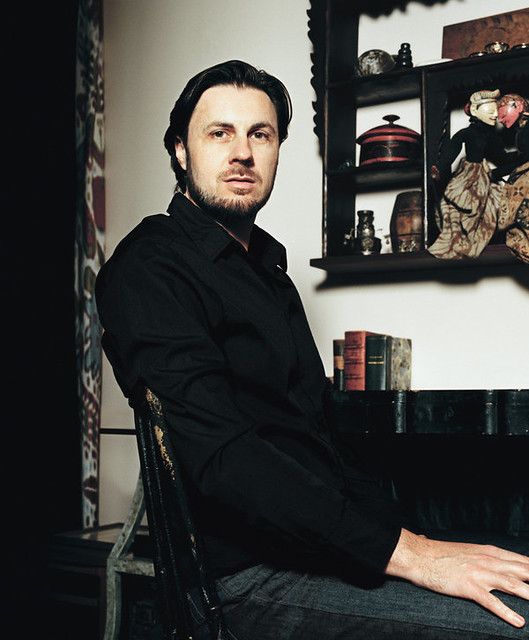
NEW YORK TIMES: You could be forgiven for not knowing about the artist Mart Meyer, who lives in Dallas and photographs what he sees almost moment by moment. Or for not having heard of the Chinese artist Ju Hu, who created a large-scale work examining the “malleable flow of time” as he camped out in an autumnal forest and tried to tape every fallen leaf back onto its tree. Almost certainly, you’re not acquainted with the art made by Rosalie Starr, who died in 1969 but whose sculptures were recently discovered in the attic of a Georgia boardinghouse, or the guerrilla feces paintings — quite beautiful, really — that have been popping up on the walls of public restrooms in New York and four other states and attributed to an artist known only as the East Coast Swiper.
This is because the East Coast Swiper and Rosalie Starr and Mart Meyer and Ju Hu are just-barely discovered artists. Their work can, at the moment, be seen only inside a curious book — the 412-page catalog for an obscure and yet-to-be-mounted biennial exhibition called “Seek: 100 in 2011.” The catalog displays an array of work from 100 quirky and previously unknown artists, each one introduced by a brief bit of text. The book’s glossy photographs show  etchings, watercolor, mixed-media sculpture, room-size installations, still photographs taken from short films, self-portraits, grand abstract paintings, tiny carved objects and staggeringly detailed trompe l’oeils. There’s art made from acrylics, pastels and clay, not to mention saltine crackers, parachute fabric, butterflies, lichen and lead.
etchings, watercolor, mixed-media sculpture, room-size installations, still photographs taken from short films, self-portraits, grand abstract paintings, tiny carved objects and staggeringly detailed trompe l’oeils. There’s art made from acrylics, pastels and clay, not to mention saltine crackers, parachute fabric, butterflies, lichen and lead.
From a former prostitute named Nina Shaufner, there is an exquisite ink-and-chalk rendering of a man’s hairy buttocks. (“Her series of Johns Drawings are a cathartic confession of her past and a thorough attempt to reclaim power by objectifying these very clients.”) Another set of photos shows a collection of painted borderlines and talismanic, glittering salt piles created by a sleepwalking housewife from Memphis. (“Audrey is always startled by these actions, but clearly understands them as protective creations meant to shield her family from any harm.”) According to an introduction written by two curators named Calinda Salazar and Fletcher Ramsey, the biennial exhibition has been designed to showcase “unexposed artists, hidden practices, folk traditions and mystics.”
What at first seems most striking about “Seek” is that it’s both odd and big. The artwork could fill several marble-floored pavilion halls in Venice or at the Whitney. What’s most surprising, however, is the book’s final revelation — a brief note offered on the last page — that there aren’t, as it turns out, 100 artists. Nor are there two curators. The biennial catalog is itself a sort of meta-piece of art, and the artists represented are really only one artist — a guy who has chosen to bifurcate and fracture and channel himself in a hundred different ways. Every work in the book, in other words, was conceived of and handmade by a single person — a 37-year-old named Shea Hembrey — over a two-year period, in a mad and, he would tell you, somewhat desperate attempt to answer his own questions about what makes art meaningful. For the last several years, he has lived cheaply in Frenchtown, courtesy of its most famous resident, the writer Elizabeth Gilbert. The two met at a Wyoming artist colony in October 2004. Gilbert, who at the time was a respected but relatively obscure writer, was working on an early draft of “Eat, Pray, Love.” MORE
